Stay Relevant. Build Smarter. Lead the Future.
In today’s fast-moving technology landscape, it’s not enough to keep doing what you’ve always done. The expectations for software developers are evolving rapidly — not only do you need to write great code, but you’re also expected to understand cloud infrastructure, data pipelines, and increasingly, AI integration.
If you’re wondering what to learn next to stay relevant in 2025, this guide breaks down the essential skills, tools, and concepts that every modern technologist should have in their toolkit.
Cloud-Native Architecture & Infrastructure as Code (IaC)
Automate infrastructure, scale reliably, and reduce manual error.
| Tool / Concept | What It Is | What It’s Used For | Why You Should Learn It |
| Terraform | Declarative Infrastructure as Code tool | Provision and manage cloud infrastructure | Cloud infrastructure is table stakes. Vendor-agnostic and widely adopted. |
| Pulumi | IaC using general-purpose languages | Define infrastructure using Python, TypeScript | Bridges Dev and Ops; ideal for developers applying coding skills to infrastructure. |
| AWS CDK / Azure Bicep | Cloud-native IaC frameworks | Provision AWS or Azure resources | Deepen your expertise within specific cloud ecosystems. |
| Kubernetes | Container orchestration platform | Deploy, scale, and maintain containerized apps | The backbone of cloud-native microservices. |
| ArgoCD / Flux (GitOps) | Git-based Continuous Delivery tools | Automate deployments, ensure cluster state | Enables safe, reliable, automated deployments via Git workflows. |
| Service Meshes (Istio, Linkerd) | Service-to-service communication layer | Manage traffic, enforce policies, add observability | Solves microservice complexity. Crucial for scaling securely. |
| Containerization (Docker, Podman) | Container build/run tools | Package apps and dependencies into containers | Universal standard for portability and consistency. |
AI / ML Integration for Developers
Move beyond the AI hype — build real, practical AI-powered systems.
| Tool / Concept | What It Is | What It’s Used For | Why You Should Learn It |
| OpenAI API / Azure OpenAI Services | Pre-trained LLM and AI services | Integrate chatbots, summarization, automation | AI is becoming part of every system. Stay competitive by knowing how to plug in LLMs. |
| LangChain / Semantic Kernel | Frameworks for chaining LLM prompts and tools | Build agent-based systems and multi-step reasoning | AI integration is more than calling APIs — these tools help you create real workflows. |
| Vector Databases (Pinecone, Weaviate) | Databases for semantic search and RAG | Power search, recommendations, and AI knowledge bases | Search that understands meaning, not just keywords. Core to modern AI-enhanced apps. |
| RAG Architectures | Retrieval Augmented Generation approach | Ground AI models in your own data | Avoid hallucinations, improve AI reliability, and enhance accuracy. |
| Prompt Engineering / Fine-Tuning | Prompt design and model tuning | Control AI responses for your business use cases | Effective prompts are a skill — they shape AI output quality. |
| ML Model Deployment (TensorFlow Serving, TorchServe, SageMaker) | Model serving tools | Deploy and scale machine learning models | Turning models into business value requires production-ready delivery. |
Data Engineering & Streaming
Enable real-time insights and data-driven decision-making.
| Tool / Concept | What It Is | What It’s Used For | Why You Should Learn It |
| Apache Kafka / AWS MSK | Distributed streaming platform | Real-time data ingestion, event-driven systems | Event streaming is the backbone of modern data architectures. |
| Apache Flink | Stream processing engine | Analyze and process data in motion | Real-time analytics is a competitive advantage. |
| dbt (data build tool) | Data transformation for analytics | Clean and transform raw data into usable tables | Modern data pipelines depend on clear transformations. |
| Snowflake / BigQuery / Databricks / Synapse | Cloud data platforms | Data warehousing and analytics | Handle massive datasets without heavy lifting. |
| Delta Lake / Iceberg / Hudi | Data lake storage frameworks | ACID transactions and version control in data lakes | Keep your data clean, accurate, and queryable at scale. |
| Apache NiFi | Data ingestion and flow automation | Move and transform data across systems automatically | No-code/low-code solution for fast pipeline development. |
Modern API Development & Integration
APIs are the glue between systems. Master them to connect the world.
| Tool / Concept | What It Is | What It’s Used For | Why You Should Learn It |
| GraphQL (Hasura, Apollo Server) | Flexible API query language | Let clients request exactly the data they need | Avoid over-fetching and under-fetching — efficient APIs are in demand. |
| gRPC / Protocol Buffers | High-performance RPC framework | Efficient microservice-to-microservice communication | Strong typing, low overhead — ideal for scalable systems. |
| RESTful APIs + OpenAPI / Swagger | Standard web service approach | Design and document APIs | REST is still the workhorse of system integration. |
| Async APIs / Webhooks | Event-driven API pattern | Notify systems about changes in real time | Power responsive, event-based systems. |
| OAuth 2.0 / OIDC / SSO | Secure authentication standards | Control identity and access across apps | Security is non-negotiable. Know how to implement it properly. |
Distributed Systems & Microservices Patterns
Architect for resilience, scalability, and maintainability.
| Tool / Concept | What It Is | What It’s Used For | Why You Should Learn It |
| CQRS / Event Sourcing | Separate read/write models and event storage | Enable audit trails and scalable business logic | Build reliable, audit-friendly distributed systems. |
| Saga Pattern / Orchestration | Transaction coordination pattern | Manage long-running transactions across services | Prevent failures from cascading across microservices. |
| Distributed Tracing (OpenTelemetry, Jaeger, Zipkin) | Request tracing tools | Debug and monitor distributed systems | See the full picture — trace requests end-to-end. |
| Resilience Patterns (Circuit Breaker, Bulkhead, Retry) | Fault-tolerance mechanisms | Keep services available even when others fail | Design systems that survive partial outages. |
Security by Design
Good security is part of good architecture, not an afterthought.
| Tool / Concept | What It Is | What It’s Used For | Why You Should Learn It |
| OWASP Top 10 / API Security Top 10 | Vulnerability awareness lists | Secure apps and APIs against common attacks | Prevent the most common and damaging security issues. |
| Zero Trust Architecture | Security approach that assumes breach | Verify every user and device, every time | Required by modern enterprise standards. |
| Secrets Management (Vault, AWS Secrets Manager) | Secure credential storage | Protect keys, passwords, tokens | No more hardcoded secrets — secure your systems properly. |
| SAST / DAST / SCA Tools | Security analysis tools | Detect vulnerabilities early in development | Shift left — catch problems before they hit production. |
DevOps & Platform Engineering
Automate delivery, reduce friction, and empower developers.
| Tool / Concept | What It Is | What It’s Used For | Why You Should Learn It |
| GitHub Actions / GitLab CI / Azure DevOps Pipelines | CI/CD automation tools | Build, test, deploy automatically | CI/CD is expected. Makes releases faster and safer. |
| Backstage.io | Developer portal platform | Self-service discovery of services and documentation | Boost developer productivity across teams. |
| Helm / Kustomize | Kubernetes configuration managers | Package and deploy Kubernetes apps | Simplifies and standardizes Kubernetes deployments. |
| Observability Tools (Prometheus, Grafana, Loki, ELK) | Monitoring, logging, alerting tools | Understand system health, debug issues | Observability is key to uptime and performance. |
Software Craftsmanship & Languages
Tools change, but solid fundamentals last.
| Tool / Concept | What It Is | What It’s Used For | Why You Should Learn It |
| Python | General-purpose scripting language | Glue code, automation, AI integration | Python’s simplicity and versatility make it a universal skill. |
| Golang (Go) | Compiled systems programming language | High-performance backends, infrastructure tools | Fast, simple, concurrency-friendly — ideal for cloud-native work. |
| Java | Mature enterprise language | Enterprise systems, Android apps, large-scale backends | Still dominant in big business environments. |
| TypeScript / Node.js | Typed JavaScript and runtime | Modern web and server-side development | Highly employable skillset for full-stack development. |
| SQL + NoSQL (MongoDB, DynamoDB) | Data storage technologies | Structured and unstructured data management | Know how and when to use the right type of database. |
Conclusion: Building Your 2025 Skillset
The role of the software developer is changing. Success in 2025 isn’t just about knowing one language or framework — it’s about understanding how the pieces fit together to build reliable, scalable, and secure systems.
Pick a few areas from this list to focus on based on your current role and interests. Whether you’re an architect, backend developer, or data engineer, these skills will position you well for the opportunities ahead.


